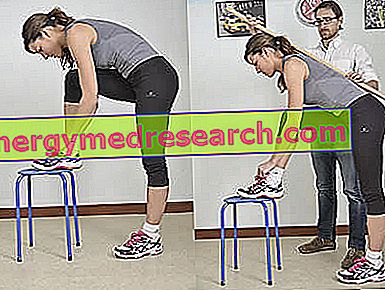By Dr. Giacomo Bellotti - Physiotherapist
Presentation

Although at a superficial glance it may appear as a single and compact structure, a closer analysis shows that it is formed by 34 small bones called vertebrae.
Each of these vertebrae has a specific movement and function and, precisely because of this complexity, two distinct and opposite tasks coexist within our spine.
The latter, in fact, must be able to:
- to maintain the overall stability of the organism;
- ensure optimal mobility on all movement plans.
This concept is what in logical terms is defined as a paradox, ie the juxtaposition of two opposite functions within the same structure.

It is important to understand this concept since the causes of back pain are to be found precisely in the loss of balance between the two components, ie in the shift towards a too "static" column or, as in most cases, too mobile or "unstable".
The discomfort and pain in the column, in fact, arise and occur especially in people who have lost the ability to stabilize their spine during normal activities of daily life. This loss, except in rare and particular cases, is a natural consequence linked to a sedentary lifestyle and bad postural habits.
From what has been said so far you can easily understand the importance of learning to keep your back in a "neutral" position that allows you to respect the natural and physiological structure of the spine and, at the same time, combine stability and mobility.
Using the technique outlined in the following lines will help you return to your normal everyday life without having to endure annoying and uncomfortable pains.
Let's see how to learn to keep the spine in a "neutral" position:
 |
 |
 |
The one just reached is the "neutral" position of the spine, a posture that allows to combine stability and functionality within the same structure and that must be used during the course of most daily activities.
This is the safest position ever for your back because in this way the muscular and articular tensions are perfectly balanced between them.
Some examples of everyday situations in which it is good to learn to maintain the "stability" and "neutrality" of the column are:
 |
 |
 |
 |
Learning to control the "neutral" position during everyday life is not an easy task since it requires an important physical and mental effort at the same time:
- a physical commitment since many movements will be more expensive, "uncomfortable" and tiring than the previous ones;
- a mental commitment as you will need to make sure you monitor your position in space during each movement.
A point that I always want to emphasize when discussing these topics with my patients is the importance that the subject himself learns to take care of himself: the only way to solve the problem definitively and positively consists, in fact, in having a gaining awareness and deciding to change the state of things.
No doctor or physiotherapist, in fact, can solve a disorder of this kind from the outside and with their own strength.
To overcome back pain, the individual must learn:
- to control one's posture at work as well as in leisure time;
- to practice a correct and moderate physical activity daily;
- to follow a balanced diet and stay within the correct body weight.
Life poses numerous obstacles on our path and often the road is uphill and the path is not without difficulty.
There are and will continue to exist "good" days and "bad" days but this is not a good reason to be discouraged and surrender.
In nature, nothing is achieved without giving something back, if you really want to solve your back pain problem then you have to get involved right now.
With this we arrived at the end of the article but, before leaving us, you must know that I like to conclude my every writing in the fashion of a great philosopher of the past, who used to give the reader a "small reward" as he called it him, that is a brief thought to meditate on.
"Because of the fact that some business is difficult for you, you don't have to think that this is an impossible task for man. But if there is something possible and proper to man, you must consider it also open to you"
Marcus Aurelius



